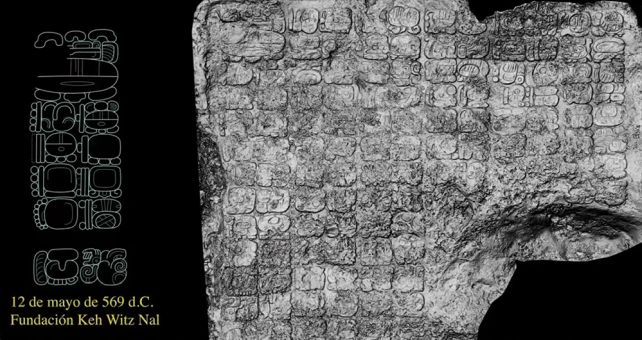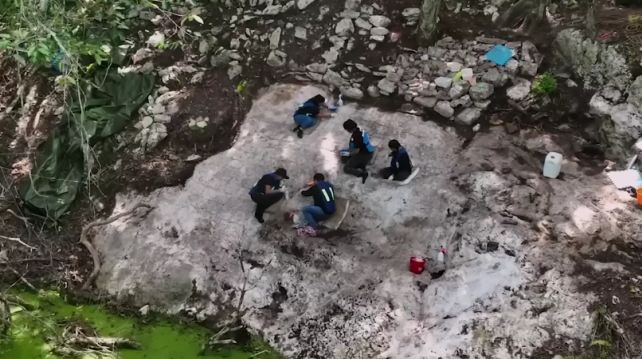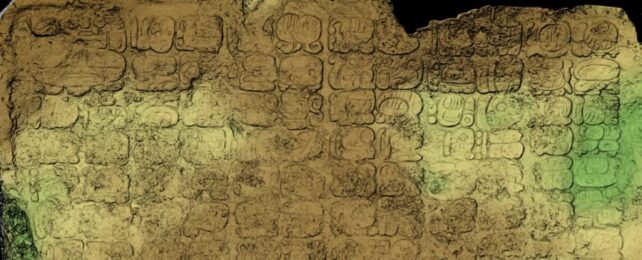Deep in the Mexican jungle at the tip of the Yucatán Peninsula, archaeologists have uncovered a hidden treasure trove of history.
There, in the ancient, long-abandoned Maya city of Cobá, near the towering Nohoch Mul pyramid, a vast stone slab was found tucked away in what was once the floor of a sacred pool. What makes this slab so special is what it bears: an inscription consisting of 123 glyphs, painstakingly carved into its surface.
Initial inspection suggests that the glyphs describe the founding date of a town called Keh Witz Nal, or "Deer Mountain", on 12 May 569 CE. They also name a previously unknown Maya ruler – K'awiil Ch'ak Chéen, a name invoking K'awiil, the Maya god of lightning.
Other glyphs refer to the gods who were thought to have founded Cobá, including Bolón Tz'akab Ajaw – the lord of countless generations.
Located in what is now the state of Quintana Roo on the eastern side of the Yucatán Peninsula, the once-glorious, now ruined city of Cobá may have been built by the Maya as early as 50 BCE and continuously inhabited for over 1,500 years, with the most recent buildings constructed between 1200 and 1500 CE. At its peak, it was a thriving cultural hub boasting an estimated 50,000 inhabitants.

It's one of the few archaeological sites to still carry its Maya name, Ko'ba a, a name that means rough waters, and it's filled with engravings and sculptures that reveal much about the spiritual and aesthetic lives of the Maya who once lived there.
Excavations at the site are very careful and painstaking, and Mexico's National Institute of Anthropology and History (INAH) has been taking its time to uncover and restore the monuments of the city that have become temporarily lost to the jungle and time.
The stone slab was discovered at the bottom of what was once a pool, and it's stunning. It covers an area of 11 square meters (118 square feet), with glyphs painstakingly carved onto its surface in a sort of L-shaped arrangement that accommodated the shape of the stone.

Previously, 14 rulers of Cobá had been identified, including three women, one of whom reigned for 40 years. With the new information contained in the heavily stylized script, the researchers were able to corroborate that many of these rulers adopted the name of the god K'awiil.
A more in-depth study of the inscription will be made, but for now, the archaeological team is focused on restoring and preserving the stone against further damage from water and erosion.
A detailed, high-resolution 3D construction has been made, and will enable further study without disturbing the stone further.
